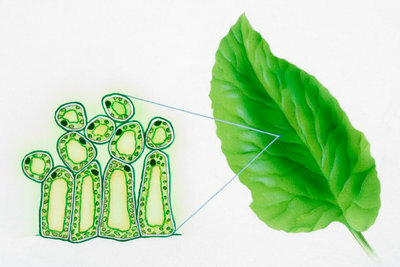The differences: animal and plant cells explained biologically
Cells without a nucleus are called prokaryotes, whereas those with a nucleus are called eukaryotic. You are aware that both animal and plant cells should be added to the eukaryotic cells. But what are the differences between animal and plant cells?

The properties of plant cells
- One of the most important components of plant cells is the cellulose-containing cell wall, which acts as an exoskeleton to ensure cell stability. Take a closer look at a blade of grass and you will be able to see the exoskeleton with the naked eye.
- Since plants carry out photosynthesis, their cells also contain plastids, which can be described as a type of cell organelles. You have probably also heard the expression of the chloroplates in relation to plant photosynthesis.
- Ultimately, as a cell component, these ensure the green color of the plant cell, while the peroxisomes are used for cell detoxification and vacuoles contain the cell sap. In the ribosomes, in turn, there are produced DNA proteins.
- Of course, a plant cell also contains a large number of membranes. For example, the endoplasmic reticulum as the duct system of the cell is surrounded by several membrane layers.
- The reticulum is directly connected to the DNA-containing cell nucleus. Another membrane-enclosed cavity, which is primarily responsible for cell respiration, is the Golgi apparatus in the cytoplasm.
- In order to breathe, the plant cell also needs the mitochondria. According to modern research, the mitochondria were not generated by the cell, but were once independent organisms.
Structure and function of the plant cell
The complex structure of cells is related to the diverse tasks that these ...
The main differences between plant and animal cells
- Unlike the plant cell, animal cells can do without the cellulose cell wall described above. Animal cells only need the cell membrane, but an exoskeleton is not necessary for them, as they are inherently strong enough.
- Since plant cells only need their plastids for photosynthesis, those cell organelles are also part of the differences between plant cells and animal cells. The situation is similar with the green-colored chloroplasts and the sap-containing vacuoles.
- Apart from their structure, the differences between plant and animal cells are mainly found in the processes within the cell. While the plant cell needs nitrogen for photosynthesis, the animal cell needs it for Cell respiration Oxygen, which is the differentiated energy supply of plant cells and animal cells made clear.
- The energy supply also includes the "nutrition" of the cells. The difference between the two types of cells is that animal cells serve as storage for produced glycogen, while plant cells store starch or glucose.
Despite all their differences, you will surely recognize how similar plant and animal cells are in their basic structure. The next time you pick a flower, you may do so more consciously, because like the animal it is a living being and its cell structure shows this clearly.
How helpful do you find this article?



